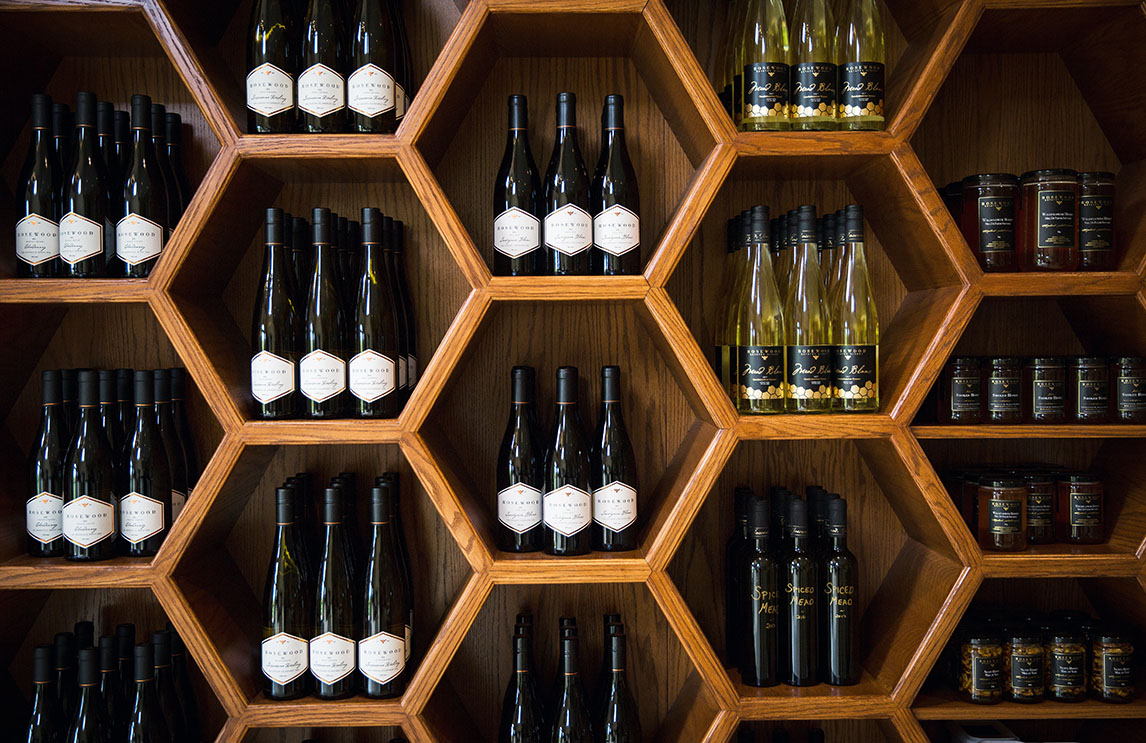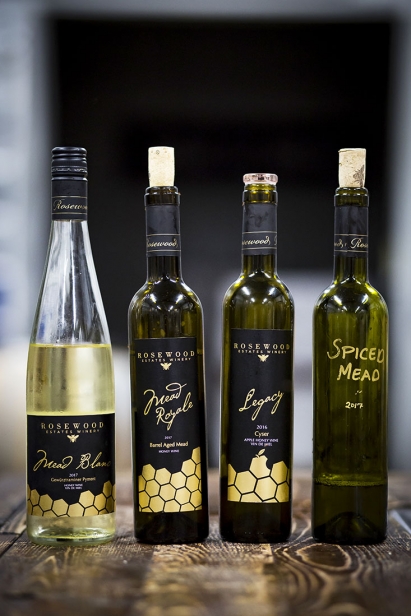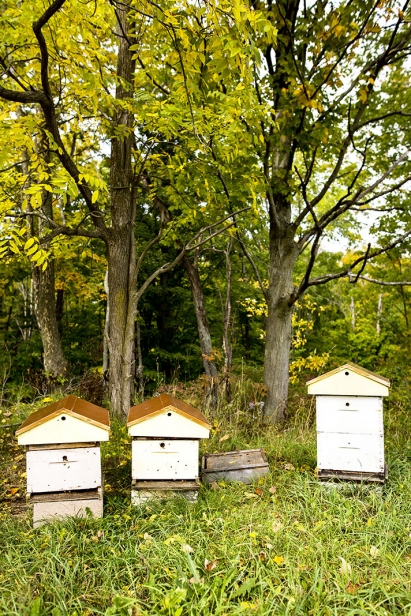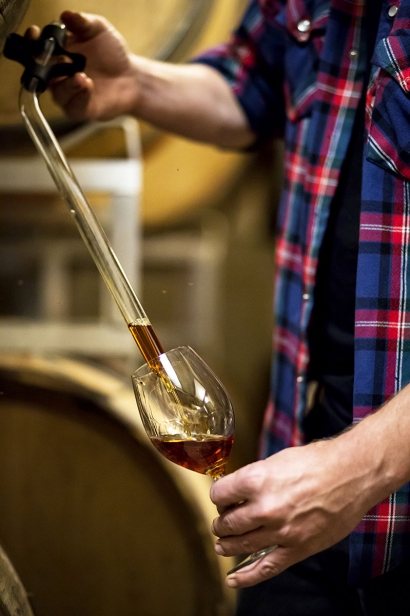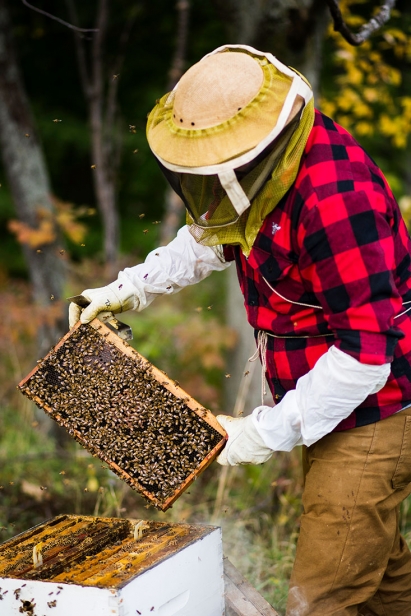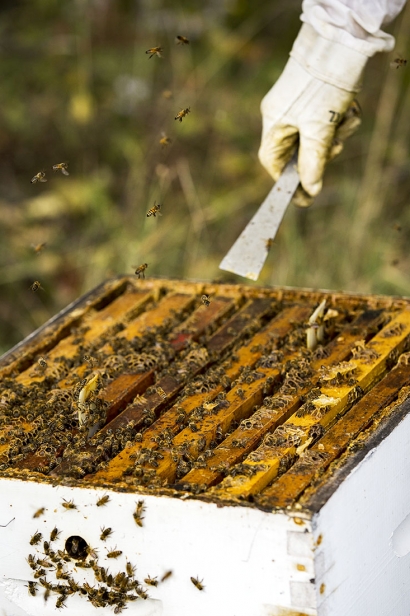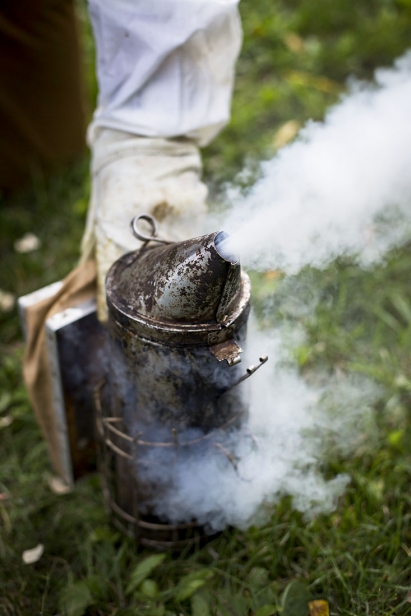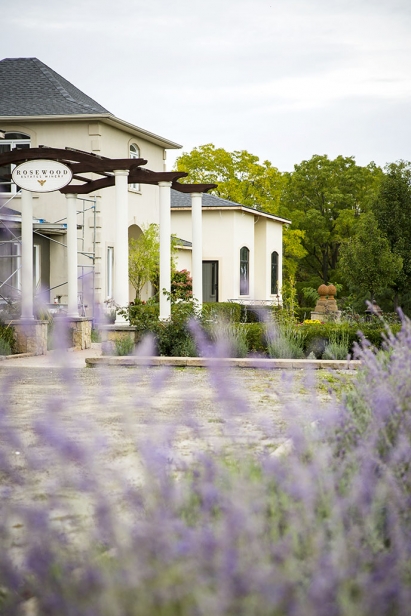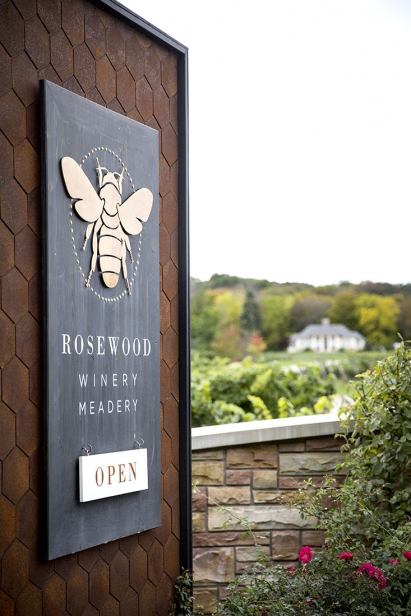New Buzz for the World's Oldest Wine
It's a question William Roman, head beekeeper and general manager of Rosewood Estates Winery, gets often: “What is mead — you guys are butchers?”
Mead, not meat, is thought to be the world’s oldest alcoholic drink — but today it is a mere curiosity on the Ontario market, its sales trailing far behind those of beer, wine and cider.
In the early 2000s, when Rosewood first started selling this fermented honey beverage, the customer base was almost exclusively Renaissance re-enactors, supplemented later on by book buffs and Game of Thrones fans, Roman recalls. “And then we got rock metal bands, people with massive beards, crazy long hair, death metal shirts.”
Those initial customer groups remain, but producers are now introducing mead to a whole new market of wine, spirit, beer, and cider drinkers. The myth about mead is that it’s just a simple sweet wine. Often sweet, yes, but it doesn’t have to be. A honey wine base can produce something that drinks like dessert wine, a dry white, a session beer or cider, and even bourbon, all aimed at an untapped market that seems on the verge of finding its own Ontario renaissance.
Honey wine in ancient times
In its basic form, mead is made by fermenting honey diluted with water — a practice that dates back at least 9,000 years, according to archaeological findings in China.
But in ancient times, honey wine was popular across the globe. It was widely consumed throughout Africa and remains popular in Ethiopia, where a spiced mead called Tej remains the drink of choice. In ancient Greece, mead was not only the preferred beverage, but considered the drink of the gods; the Greeks called it ambrosia or nectar and believed its positive effects ran the gamut from health and strength, to intelligence and wit. In Celtic mythology, a river of mead runs through paradise, while Anglo-Saxons saw mead as the path to immortality, poetry and knowledge.
Though mead was largely replaced by wine in grape-growing regions, it is now finding renewed popularity in Europe and the United States. In the U.S., mead is on a meteoric rise — with a 2017 report from the American Mead Makers Association finding that a new meadery was opening every three days.
In Canada, the advance is slower, but gathering momentum. In Quebec, Ferme Apicole Desrochers D receives international acclaim from restaurants and wine fairs for its long-barrel-aged mead, sparkling mead and a still-wine-like mead fermented to dry and aged on its lees. In Ontario, Rosewood in particular is embarking down a similar path, while newer entrants are aiming for more mass-market appeal.
In addition to making wine from grapes, Rosewood has been making quality wine-style meads for years, ranging from just barely off-dry versions to sweet dessert wines.
But a recent accident forever changed the path of their mead making.
A burnt, bitter happy accident
In 2014, a batch of honey was accidentally burnt as it heated up in preparation for bottling, the first misstep in a comedy of errors that birthed a unique honey wine. Rather than a lukewarm journey to 60 degrees Fahrenheit (about 15 degrees Celsius), this honey had been turned up to 180 degrees: It was black, bitter and unsellable. Nevertheless, the Rosewood team decided, as an experiment, to bring the honey to the winery and let it ferment. The result, according to Roman, was “one of the most unpalatable drinks I’ve ever tried.” Still, they decided to let it hang around in a tank to see if it would evolve. Time alone didn’t help.
With the harvest of 2016 leaving no place in the winery for the nightmare mead, out it went into a refrigerated truck. That’s where the second happy accident occurred. One night, the refrigerator unit malfunctioned and, by the time Roman noticed, it had become a full-on freezer and the burnt mead was frozen solid. Roman was sure this was a merciful end for the experiment. But when it defrosted, he noticed that a mass of dark liquid remained at the bottom and the remaining mead had suddenly softened, the rough edges morphing into complexity and depth. Instead of pouring it down the drain, the Rosewood team decided to transfer it to French oak and, finally, as it improved more, to expensive bourbon barrels. A product called "Old Smokey" was born.
“We’ve had numerous people say it’s their favourite thing we make,” Roman says of the final product that tastes like an easy-drinking whiskey with a more viscous body and honeyed finish.
“Old Smokey really pushed the boundary for us because we attracted not only people who liked mead but people who liked bourbon and wanted to give it a try. So it’s given us a lot more ability to explore different flavours, to push the boundary of what mead is by definition.”
Scion of a beekeeping family, Roman is attuned to the possibilities of honey. For him, it’s been exciting to find a winemaking team as eager as he to push mead forward.
“I came in not knowing anything about mead,” admits Ryan Corrigan, who became Rosewood’s head winemaker two years ago. “But with the success of Old Smokey we were like, let’s try other things, so that led to us getting Calvados barrels, rum barrels and cognac barrels, because I love cognac.”
Rosewood is experimenting with a wild, fermented blend of Chardonnay and wildflower honey maturing in cognac barrels. The mixture proves rich on the palate — and, at a mere 20 per cent alcohol by volume, it’s supremely sippable.
Perhaps the most interesting project in the works in the Rosewood cellar, though, is an attempt to make something that drinks like sherry out of a honey wine base. Based on a mead called Ambrosia, which was expensive and a slow sell, the new libation is fortified and then aged in a solera system. (A solera system, used primarily in sherry production, allows winemakers to blend a range of vintages together in a series of barrels, arranged from youngest to oldest. None of the barrels are ever completely drained, so some earlier product always remains in each container. Over time, this system lends sherry its characteristic nutty notes and results in a complex yet consistent product.)
Though the final product might be a few years off, it’s already one of a kind, with the rich texture and depth of honey, but without the expected sweetness. The flavour of roasted almonds hits first, and then a deep floral note that only great honey provides. While sherry and honey are there, there’s also something new.
Honey’s incredible versatility
A little further down the QEW in Niagara-on-the-Lake, another team is also looking to make a new form of mead. But rather than aiming for wine and spirit drinkers, they’re looking to session beer and cider for inspiration.
“If you look to craft or artisanal beers and ciders, it seems people are hungry for different versions of those drinks,” says Sean Hazell, one of the principals behind Royal Canadian Mead, a new brand planning to launch in early 2019. “Even though there’s endless choice in beer and cider, there hasn’t been anything wholly new for a while, so we saw it as an opportunity to create this new category. We thought, how do you modernize a beverage that’s perceived as old?”
With that goal in mind, Royal Canadian has teamed up with Gavin Robertson, the Niagara College Teaching Winery’s head winemaker, to explore all the different permutations of mead. They explored sweetness levels, yeasts, base honeys, fruit blends and more, before going with a lower alcohol, sparkling version.
The goal for Royal Canadian is to sell their mead in cans through the LCBO, as well as through select restaurants. The vision is an accessible, crushable drink, but that doesn’t mean something on par with commodity frat-house beer. This is a team that cites beverage pairings at the famed Copenhagen restaurant, Noma, as inspiration for exploring mead. They care about ingredients, taste andquality, and they’re hell-bent on getting this right.
So while Rosewood is moving mead towards the spiritous side, this team is taking the alcohol down a notch to between five and seven per cent alcohol by volume (ABV) to create a fun, everyday drink. Local fruits will feature heavily in offerings such as cherry mead that develops an almost cinnamony character, Niagara peach mead that’s been a crowd favourite at test events and mead blended with a touch of cider, which added a welcome kick of acidity to the samples I tried.
A “plain” sparkling mead is also in the works, to show off the pure honey character, as are single-variety special editions to highlight the differences between, say, blueberry honey and lavender honey. The distinctive flavour of buckwheat honey is slated to be paired with hops for a drink resembling a session IPA.
Curses and blessings of mead
“One of the curses and blessings of mead is that there’s so much you can do with it,” says Alex Yurek, another of Royal Canadian Mead’s founders. “What we’re going for is off-dry, light, refreshing. It’s all about how we get people to pick this up and create an occasion around enjoying it.”
To that end, the Royal Canadian team is hard at work on bold can designs featuring bright contemporary artwork and a modern feel, along with cheeky product names like “All Day Croquet.” It’s a little bit LaCroix, a little bit Collective Arts and a healthy dash of something new.
“We want to give a spirit to this thing and challenge assumptions of what mead can be,” Hazell explains, unknowingly echoing Roman’s words at Rosewood even as they’re exploring different ends of the honey wine spectrum.
But there is some convergence between these two hopeful mead renaissance enactors. At Rosewood, too, there are a couple products in the works that lean towards the lighter side of mead — one, an unsurprisingly off-the-wall sparkling and the other, essentially beer.
That sparkling is a pétillant naturel, more commonly called a pét-nat — a style of sparkling wine made by bottling fermenting wine and allowing the ongoing fermentation to create carbon dioxide under a crown cap. The wine in this case, though, is honey fermented on the leftover skins from an orange wine.
“It was New Year’s Eve and I can’t remember why it popped into my head while I was cooking lobster,” Corrigan tells me as we taste the delightfully funky work-in-progress. “I was thinking we have this wine on the skins for eight months, so what if we did a honey-style pét-nat on those skins after we finished fermenting the orange wine.”
The goal is to bottle this experiment at about nine per cent ABV, resulting in a sparkler that will drink almost like a sour beer despite its sweet beginnings. In other words, a sort of strange middle ground between Royal Canadian’s crushable cans and Rosewood’s own boozier, barrel-aged bombshells.
And because the Rosewood folks are also huge beer lovers, they’ve recently become licensed as a brewery as well, with the goal of producing braggot — the name for beer made with honey in place of malt sugars.
Interestingly, while honey is known for its rich tongue-coating texture, when it’s used in the brewing process, it can result in a thinner-bodied beer. It’s a challenge Rosewood’s head brewer, Barret Campbell, is still working through, but one he says is worth dealing with in return for honey’s positive benefits. “It really affects the finish in a way that other sugars don’t,” he explains. “Honey produces a nice long finish with a natural sweetness.” Like most things at Rosewood, it offers a new taste sensation; it’s beer, but it’s not.
Rosewood hopes to introduce this flavour to the market soon, perhaps sharing shelf space with sessionable mead such as that from Royal Canadian Mead. If so, it's likely to be joined by other entrants that are cropping up in the Ontario market, such as Tallgrass Mead in Thorndale and Honeypie Hives and Herbals in Prince Edward County. Just as in the U.S. market, there seems to be a hive mind bringing more meaderies to the region at every turn.
This all sounds pretty sweet to Rosewood’s William Roman. “Over time, we’ve been building up this market — and now it’s a combination where all those people from before, like the Renaissance re-enactors and the death-metal guys, still want it, but now there are other customers who can respect mead and want to explore it,” he says. “Most people forget that honey is so varietally and seasonally distinct, so why not use this platform to showcase it?”
Rosewood Estates Winery
4352 Mountainview Rd., Beamsville, Ont.
rosewoodwine.com | 905.563.4383 | @rosewoodwine
Royal Canadian Mead
royalcanadianmead.com | 647.335.2591 | @royalcanadianmead


